From inside (document excerpt):
58MXA 4-Way Multipoise Fixed-Capacity Direct-Vent Condensing Gas Furnace Visit www.carrier.com Service and Maintenance Instructions For Sizes 040–140, Series 130 ® ama A93040 CANADIAN GAS ASSOCIATION A PP R O VED R NOTE: Read the entire instruction manual before performing any service or maintenance. This symbol indicates a change since the last issue.
Index Page As an ENERGY STARSM Partner, Carrier Corporation has determined that this product meets the ENERGY STAR guidelines for energy efficiency. SAFETY CONSIDERATIONS 1-2 ELECTROSTATIC DISCHARGE (ESD) PRECAUTIONS 2 GENERAL 2 CARE AND MAINTENANCE 2-11 Cleaning and/or Replacing Air Filter .3 Blower Motor and Wheel Maintenance 3-4 Cleaning Burners .4-5 Cleaning Heat Exchangers 5-7 Primary Heat Exchangers 5-7 Secondary Heat Exchangers 7 Flushing Collector Box and Drainage System 7 Servicing Hot Surface Ignitor .7-8 Electrical Controls and Wiring .8 Troubleshooting 8-9-10 Checking Heat Tape Operation (If Applicable) 10 Winterizing 10-11 WIRING DIAGRAM .12 SERVICE LABEL .13 TROUBLESHOOTING GUIDE 14-15 SAFETY CONSIDERATIONS Installing and servicing heating equipment can be hazardous due to gas and electrical components. Only trained and qualified personnel should install, repair, or service heating equipment. Untrained personnel can perform basic maintenance functions such as cleaning and replacing air filters. All other operations must be performed by trained service personnel. When working on heating equipment, observe precautions in the literature, on tags, and on labels attached to or shipped with the unit and other safety precautions that may apply. Follow all safety codes, including NFPA 54/ANSI Z223.1-1996, National Fuel Gas Code and ANSI/NFPA 90B, Installation Standards, Warm Air Heating and Air Conditioning Systems. In Canada, refer to the current edition of the National Standard of A93007 REGISTERED QUALITY SYSTEM Fig. 1–Multipoise Furnace in Upflow Orientation Canada CAN/CGA-B-149. Wear safety glasses and work gloves. Have a fire extinguisher available during start-up and adjustment procedures and service calls. Recognize safety information. This is the safety-alert symbol. When you see this symbol on the unit and in instructions or manuals, be alert to the potential for personal injury. Understand the signal words DANGER, WARNING, and CAUTION. These words are used with the safety-alert symbol. DANGER identifies the most serious hazards which will result in severe personal injury or death. WARNING signifies hazards which could result in personal injury or death. CAUTION is used to identify unsafe practices which would result in minor personal injury or product and property damage. NOTE is used to highlight suggestions which will result in enhanced installation, reliability, or operation. Manufacturer reserves the right to discontinue, or change at any time, specifications or designs without notice and without incurring obligations. Book 1 4 PC 101 Catalog No. 535-841 Printed in U.S.A. Form 58MXA-5SM Pg 1 6-98 Replaces: 58MXA-4SM Tab 6a 8a The ability to properly perform maintenance on this equipment requires certain expertise, mechanical skills, tools, and equipment. If you do not possess these, do not attempt to perform any maintenance on this equipment other than those procedures recommended in the User’s Manual. FAILURE TO FOLLOW THIS WARNING COULD RESULT IN POSSIBLE DAMAGE TO THIS EQUIPMENT, SERIOUS PERSONAL INJURY, OR DEATH. GENERAL These instructions are written as if the furnace is installed in an upflow application. An upflow furnace application is where the blower is located below the combustion and controls section of the furnace, and conditioned air is discharged upward. Since this furnace can be installed in any of the 4 positions shown in Fig. 2, you may need to revise your orientation to component location accordingly. AIRFLOW Never store anything on, near, or in contact with the furnace, such as: 1. Spray or aerosol cans, rags, brooms, dust mops, vacuum cleaners, or other cleaning tools. 2. Soap powders, bleaches, waxes or other cleaning compounds, plastic or plastic containers, gasoline, kerosene, cigarette lighter fluid, dry cleaning fluids, or other volatile fluids. 3. Paint thinners and other painting compounds, paper bags, or other paper products. Failure to follow this warning can cause corrosion of the heat exchanger, fire, personal injury, or death. ELECTROSTATIC DISCHARGE (ESD) PRECAUTIONS UPFLOW HORIZONTAL LEFT DOWNFLOW AIRFLOW HORIZONTAL RIGHT AIRFLOW AIRFLOW A93041 Fig. 2–Multipoise Orientations Electrostatic discharge can affect electronic components.


 Carrier Owners Manual - Enlarge page 1 of 16
Carrier Owners Manual - Enlarge page 1 of 16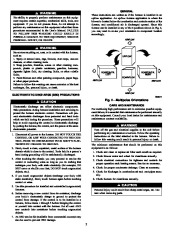 2 of 16
2 of 16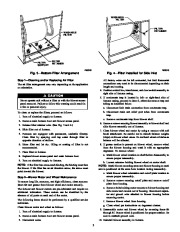 3 of 16
3 of 16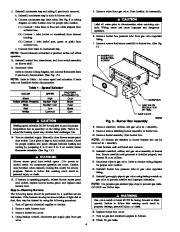 4 of 16
4 of 16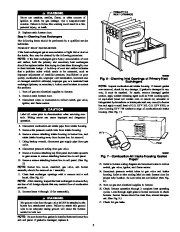 5 of 16
5 of 16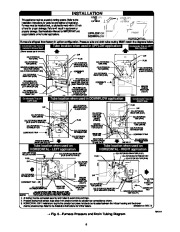 6 of 16
6 of 16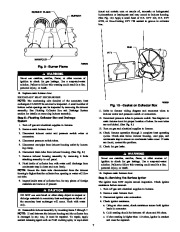 7 of 16
7 of 16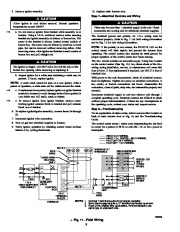 8 of 16
8 of 16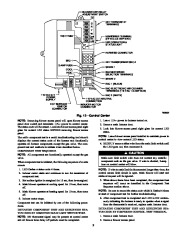 9 of 16
9 of 16 10 of 16
10 of 16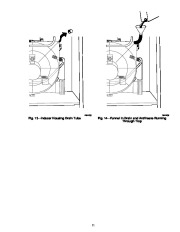 11 of 16
11 of 16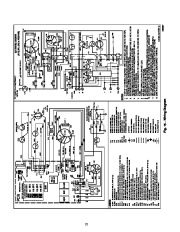 12 of 16
12 of 16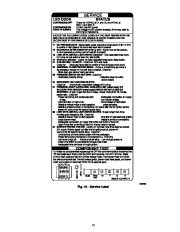 13 of 16
13 of 16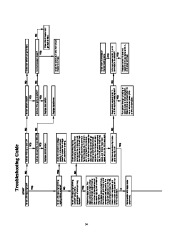 14 of 16
14 of 16 15 of 16
15 of 16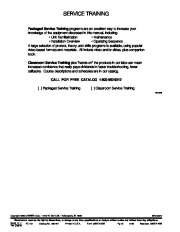 16 of 16
16 of 16